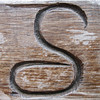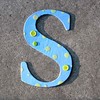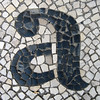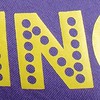Monday, December 3, 2007
Assignment #5
2)My knowledge of this product has multiplied immensely! I could not believe I made the presentation that I was looking at!I feel like I have gotten a pretty good handle on what this technology is all about. I know so much more about this product now that I have played with it from the ground up. I feel like this is something i would definitely would like to use in my future classroom . I would definitely add this to my expert list! obviously I still don't know everything,and maybe there are some shortcuts could take, but i feel like i really know how to use this technology.
Wednesday, November 28, 2007
Observation
Sunday, November 18, 2007
The classroom of the future
What I'm working with
Wednesday, November 14, 2007
Parents Information
Questions for the panel
2)What's your favorite thing about teaching with technology? has it made things more simple or difficult?
3)How do you feel about parents having so much information avaliable to them about their children?has it made dealing with parents more difficult?
Saturday, November 10, 2007
What every teacher should know about technology
Every teacher should be proficient in the use of productivity tools.
2)TROUBLESHOOTING
Every teacher should be able to troubleshoot technology-related problems that commonly crop up in the classroom.
3)TECHNICAL ASSISTANCE
Every teacher should know where to go for technical assistance.
4)WEB RESOURCES
Every teacher should be familiar with what's available on the Web in his or her subject area.
5)SEARCH SKILLS
Every teacher should have well-honed Web searching skills.
6)INTEREST AND FLEXIBILITY
Every teacher should be open to new ways of doing things.
Future Technology
COW

History of Education
Education Today and Tomorrow
Miniaturization
Friday, November 9, 2007
Ten ways to take charge of the web
1) Explore your own interests on-line. What holds for your students holds for you: Use your hobbies and passions as points of entry to the World Wide Web. There is no better way to familiarize yourself with it. Do you love auctions? Check out eBay (www.ebay.com), the on-line auction house, and bid on that old Brownie Hawkeye camera you've been longing for. Have you been meaning to join a book-discussion group but haven't gotten around to it? Join other literary-minded folks at Salon (www.salon.com) to discuss the classics or the latest best sellers on-line.
2) Develop an acceptable use policy (AUP). The best way to keep Internet access safe and appropriate for children is to teach and monitor responsible use. Make your terms the children's "ticket" for going on-line. Begin by teaching basic Internet safety rules and discuss the importance of observing them. Rules to include in your policy:
Students may access only those Web sites that you, the teacher, have approved;
Never give out your address or phone number;
Never upload your photograph without adult consent. Put your AUP in writing and print it out in the form of a contract. Have students, parents, and your principal commit to these rules by signing the contract. Be sure to post a copy of your AUP near each computer.
3) Narrow the playing field. Just as you wouldn't turn your students loose with a set of encyclopedias or a stack of Ranger Rick magazines, you shouldn't expect them to find information on-line without a framework. This was Mr. Harris's biggest mistake. If he had taken the time to identify appropriate sites about Washington, D.C., in advance and then either bookmarked the sites or posted their URLs, he wouldn't have lost control of his class's on-line research exercise.
4) Know your search engines. Search engines are indispensable tools for Web-based research. Most, however, are too indiscriminate to be useful to young users. For example, searching for "White House" on the search engine Alta Vista returns over a half-million hits, most of which will be irrelevant or inappropriate for elementary-school students. To prevent frustration and inefficiency, experiment beforehand with search engines designed specifically for children. Bookmark the ones you like best and organize them into a "search engine folder" on your Web browser. Limit your students to these as they explore specific topics you have researched in advance.
5) Consider using a filter. Although I am convinced there is no substitute for having a hawkeyed teacher or parent on hand any time children are on-line, filtering devices function as a useful safety net. Filtering software (see Filtering Options) typically accomplishes three things: It blocks access to undesirable content; it keeps a log that tracks where children have been on the Web; and it puts the skids on what kids can do on-line (such as chatting with strangers).
6) Use the World Wide Web to lighten your load. Yes, it's true. Although many teachers see technology as a pesky addition to their overflowing schedules, smart users know that they can actually save time by drawing on Web resources (see Outstanding Teacher Resources). If you know where to look, you can find ready-to-use lesson plans, reproducibles, and activities to support curriculum and standards.
7) Teach kids to navigate a Web site effectively. Model for students how they can get the most out of a site. If you have access to an LCD panel or other projection device, conduct a class lesson on a popular site. Discuss how you would be selective about clicking on the site's links, opting for ones that are most relevant to your interests. A fun site for this purpose is one created by an early-childhood-education student in Australia: www.geocities.com/EnchantedForest/Tower/4295
8) Use the Web as a professional development tool. Go on-line for wonderful opportunities to network with other teachers, exchange ideas, and learn about the latest research findings in your field. For example, Reading Online (www.readingonline.org), an electronic journal developed by the International Reading Association, offers the latest research findings in literacy as well as news about professional conferences and literacy-related events. Instructor's Teacher Forum at Scholastic.com invites teacher input on a different professional development issue each month. And www.EdsOasis.org offers teacher-generated lesson plans and discussion groups with a special focus on ESL students.
9) Teach children how to avoid plagiarism. The availability of digital texts and graphics makes it all too easy for youngsters to cut and paste information and photographs into their reports and projects without considering ownership. Just as you teach students appropriate use and citation of printed reference materials, do the same with respect to on-line resources. Post examples of correct citations in your computer area.
10) For advanced users: create on-line writers' portfolios for your students. If you already have a class Web site, consider using it to extend your portfolio management system. By hyperlinking individual Web pages for each of your students to your class's site, you can offer a far-reaching forum in which to discuss their progress as writers and to display their final products. By using this electronic medium, you'll add a new dimension to traditional student portfolios, one that can have a profound impact on students' motivation to develop their writing skills and become published authors.
Tuesday, November 6, 2007
Smart board and teaching
Tuesday, October 30, 2007
Productivity Software
Monday, October 29, 2007
Smart Board Activity
Math lesson
NETS:
Use technology resources (e.g., calculators, data collection probes, videos, educational software) for problem solving, self-directed learning, and extended learning activities.
EALRS & GLE's:
1.3 Understand and apply concepts and procedures from geometric sense:
Use a compass and straightedge, and/or computer software to perform geometric constructions.
Activity Plan:
1)The activity that I am planing to do in the classroom is a Math activity on Angles. This activity is highly interactive and really helps students understand the concept of angles.
2)I will prepare for this activity by doing the activity on the smartboard ahead of time so that I know that all of the links on the activity work. I also want to make sure that the activity is age appropriate for the students.
3)The class will be highly active in this activity because this lesson requires the students to measure angles and place angles into their different categories. The students will be assessed according to whether or not they can identify the different angles that are part of the lesson and also based on students participation.
4)I think students would really benefit from this technology because it is highly interactive and students can learn in an open environment where they can learn from each other. I also think that students would enjoy doing this activity on the smartboard rather than on paper because by introducing technology students they are able to use a language that they truly understand. I could use this activity with diverse students because for every category there is a title, and under the title you can insert the right angles. This way students who do not speak English can learn the term while seeing the visual examples. I also think this will help students with ADD because it is introducing new forms of learning in forms that they are used to working with.
Tuesday, October 23, 2007
Web Issues
Wednesday, October 17, 2007
Cell phones in class!!!!!
Friday, October 12, 2007
Technology in the classroom
1) Some of the tools that I would need to add this technology to my lesson would be either be a computer for every student in my classroom or access too computers for every student in a computer lab. I would need to download google earth,PowerPoint, Word and Write:outloud into every one of the computers that the students would be using for this lesson. The last item that I would need in the class is a smartboard.
2)I think that adding Technology to this lesson would make the students more excited about what they are doing. The use of the technology would make learning fun, because students would get the experience of working with knew tools that stimulate different learning styles in the students. Adding technology would also give students more of an understanding of where places are on the map in comparison to where the classroom is. By adding these new tool the students will also be learning skills that will help them in their future schooling. The lesson also takes the control from the teacher and puts it in the students hands, which gets the students more involved in the learning process.
3)Some of the challenges that we could have with this technology is that the students won't know how to use PowerPoint. The way that I would overcome this is by taking the students to the computer lab and walking through every step they would need to know in order to put together their presentation. the other issues we might have in the class is not having a smart board, so I would just have the students present on the projector. Lastly, students might have trouble getting their presentations on the smart board, so I would do a training session with the smart board so that all the students know how to use it.
4)This activity covers three NETS which are:
1. Creativity and Innovation b. create original works as a means of personal or group expression.
2. Communication and Collaboration b. communicate information and ideas effectively to multiple audiences using a variety of media and formats.
3. Research and Information Fluency b. locate, organize, analyze, evaluate, synthesize, and ethically use information from a variety of sources and media.
tech lesson 10-16-07.doc
Tuesday, October 9, 2007
Kidspiration
My first Kidspiration creation. I love the Fourth of July! I really like this software and I could see myself using this in the classroom in many different subjects. I also thought this was very easy for elementary students to navigate. I also really like chalksite I think it would be really easy to use in the classroom so that the students and the parents are always up to date with what is happening in the classroom.
Holiday-kidspiration.rtf
Monday, October 8, 2007
Kidspiration/Inspiration
Monday, October 1, 2007
Assignment #2
I chose these websites for teachers because they were a good variety of websites that I would like to use in the future. One of the websites that I'm really looking forward to use is Teacher Vision. This website is set up so that you can search by grade, subject or you can just look up lesson plans. I really like that this website has so many ideas that I could potentially use in the classroom. The other website that I would like to use for fun activities is ABC Teach. This website has different activities that you can print out to do in the classroom like cross-word puzzles and word searches and you can also create your own spelling lists. I could use those items for reviews or as a way of introducing new material.
For Parents:
The sites that I chose for parents were the pretty basic PTA or PTO websites which have a lot of useful information for parents that have a lot of time to get involved in their child's' school. My Favorite websites were Figure This!, and the NEA website. These two sites were my favorites because they don't require full time participation on the parents side. The Figure This! site is a website had contains numerous math challenges that parents can do with their kids together so that the parents who have full time jobs can still get involved with their child's education. I also liked the NEA website because it gives simply, practical ways that parents can get involved in their child's learning.
For Students:
All of the websites that I chose for kids are sites where kids can log in and get help with their homework or play fun games. One of my favorite sites is Yahooligans. This is the site that the Elementary school that I am student teaching at this year used last year for all the children, and the kids loved it. In this site kids can play games, listen to music, and get help with their homework. The other site that I really like which I have used in the past is Eduplace. This is a great website where students can go in and get information about the different topics that they are learning about in school.
Mathematics:
The sites that I chose for this all have to do with math for kids and for teachers. I chose math because it is something that all districts are struggling with, so I wanted to find some fun ways for kids to do math. My two favorite websites that I found are Kid Numbers and Cool Math. Cool Math has one of the greatest math sites for kids that I found. The site is very colorful and easy to navigate, so I think it would really grab kids attention. This site has a lot of math games that kids can play, using addition, subtraction, multiplication, division and others. I also really like the website Kid Numbers because not only does it have games for all of the math basics, but it also walks children through the process of learning how to perform these operations.
Reading and Language Arts:
This is also another area where many schools are struggling. Here I chose sites that are both for teacher's and for students. Many of the websites that I found are fun sites that the kids can crate their own stories or poems at. The two websites that I would probably use the most are The Teacher's Desk and the Writing Den. I really like The Teacher's Desk because it gives a lot ideas about different writing activities that a teacher can use in the classroom to get the students ready for writing a story. The Writing Den is a great resource for students because you can look up all of the different parts of speech, and it also walks students through the process of writing a sentence, paragraph, and essay.
Wednesday, September 26, 2007
Web 2.0
Tuesday, September 25, 2007
Tuesday, September 18, 2007
Using Smartboard in the classroom
Making strides in Miramichi
Saturday, September 15, 2007
Technology Literacy
2) Some of the technology that today's students use are iPods, DS, cell phones, digital cameras, laptops, Wii, xBox and many more. I think that laptops would be the most useful out of all the things on the list. You could use laptops in the classroom to quiz the kids, or to have them play a review game online.
3) There isn't that much technology in the third grade classroom that I am teaching in. The most high tech item in the classroom is an Elmo, but the schools computer lab did just get new computers. The classroom that I am a part of is at the required conditions amount of technology, according to Technology Use in Classroom Rubric. There isn't much technology in the classroom and there aren't that many ways for the students to make connections to technology. Some of the things that could be added to the classroom in order to make the classroom more technologically friendly are a smartboard, and computers. A smartboard would be a great addition to the classroom, because them the teacher could lead an entire lesson from his computer. They could also get a couple of computers in the classroom so that the students can have more access to the Internet, and they could also take their reading level tests in the classroom during individual reading time.
4) One of the lessons or activities that I would do in my classroom is to pair each child up with a e-mailing buddy so that they could have their own pen pal. Which would help meet the standards of the NETS in b1 and 4 where it says that students need to learn how to e-mail attachments and communicate with other students via e-mail. In this project the students would be required to send at least one attachment to their pen pal, whether it be a letter or a picture of their dog. Another project that I would love to do is have the students make time lines of individuals who have impacted history, but instead of having then do it on a poster I would have them make a slide show; which would meet NETS standard 5c. The last project that I would like to do to meet NETS standard 3b is to assign each student a different math problem that they have to do on paper, bring in a manipulative, and make a chart or picture for on a Word document.
Tuesday, September 11, 2007
Webpages!!!!!
http://davelover2.googlepages.com/home
Carnation Elementary Website
http://www.ce.riverview.wednet.edu/new/index.htm






